The most notable new feature of Android 8.0 Oreo
The latest Android version has many small but important additions, all of which make this operating system stand out more mature than ever. Some releases of Android show tremendous changes in Google's operating system such as testing the technical platform or introducing new designs. But there is an enhanced version of the content to further the established platform.
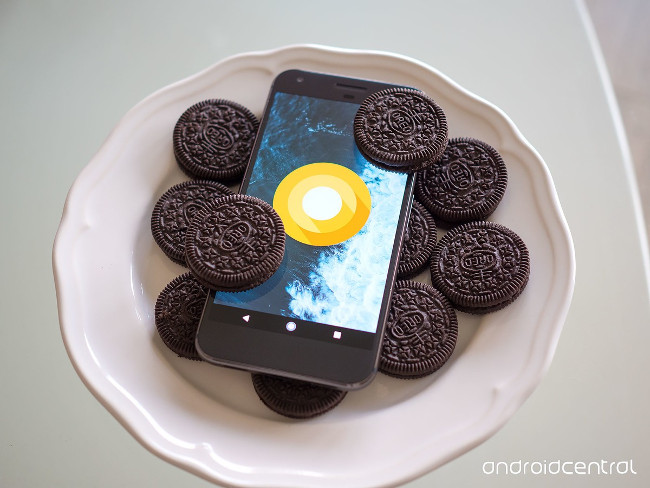 The most notable new feature of Android 8.0 Oreo Picture 1
The most notable new feature of Android 8.0 Oreo Picture 1
The new Android version for 2017, 2018 - Android Oreo 8.0 - is a compromise of both. At this point, Android is quite stable, so the user experience (UX) and functional changes are less likely to happen with every new version. However, although Oreo looks a lot like the previous version of Android Nougat, there are many features that are modified and adjusted to a low level, making Android more mature and powerful.
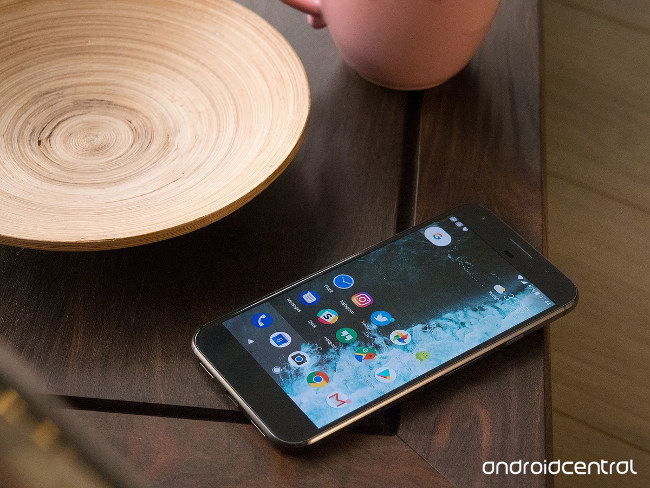 The most notable new feature of Android 8.0 Oreo Picture 2
The most notable new feature of Android 8.0 Oreo Picture 2
With Oreo, you can both watch videos in the foreground and use other applications running in the background. It will be easier to keep track of multiple notifications from the same application thanks to new notification channels and notification points (notification dot) features. Smart Autofill API and text entry features will make entering passwords less boring. And Google's "Project Treble" will help Oreo phones get updated faster. In addition, sophisticated image modifications make Android lighter, brighter and more dynamic.
- List of devices to be Android 8 - Android O of Samsung, Huawei, LG, Oppo, Sony and HTC
Watch and feel Android 8.0
Most of us see Android through the user interface "lens" that the manufacturer chooses. This long-term trend will not change in Oreo and so when you get the 8.0 version, for example on the Galaxy S8, will be slightly different from what is mentioned above Google's Pixel device.
However, many manufacturers such as Motorola, Lenovo, OnePlus and HTC are now using a user interface similar to Android Stock. So in that context, the original Android version's design is still a problem.
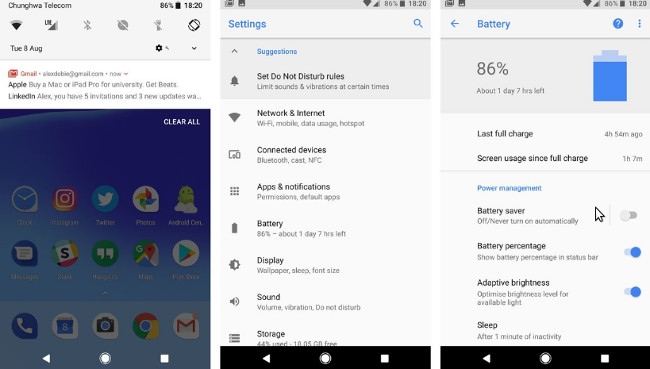 The most notable new feature of Android 8.0 Oreo Picture 3
The most notable new feature of Android 8.0 Oreo Picture 3
There are not many visual changes in the new version of Android. In fact, the most noticeable difference in images is a brighter color palette for the quick install area in the notification shade (notification shade). Now it is light gray, the same color as the original Settings app. For Pixel users, this may be the only visual change they notice.
Besides changing colors, there are some changes in quick setting panel settings, users can easily access settings, switch users and edit shortcuts on larger phones. Because of the aspect ratio of 18: 9 conversion screens in many flagship devices this year, it is important to improve accessibility on higher-end phones.
Changing the next important image on Android 8.0 Oreo version is the design of the Settings app. The 'hamburger' navigation panel on Nougat has been removed and Google has made navigation easier by redesigning 13 submenus. Many main installation options come with icons. and Android is currently doing a good job of displaying important items in each submenu.
Android's settings are lighter, simpler to navigate and more accessible
New battery installation page is a great example for this. The screen brightness is displayed immediately on the top of the page, along with the time from the last charge. Scroll down a bit, you will see the application is "consuming" the battery the most.
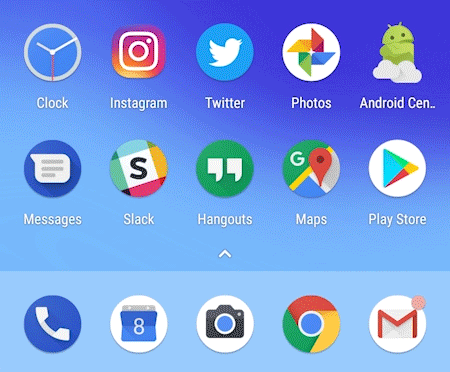 The most notable new feature of Android 8.0 Oreo Picture 4
The most notable new feature of Android 8.0 Oreo Picture 4
You need to look at the surface below to recognize other visual changes in Android 8.0. For example, Google finally began to consciously order the application icons in Android with the new "adaptive icons" feature. This feature allows phone manufacturers to change cutout shapes into shapes that best fit their own visual style. (On Pixel, you can select five cutout types.)
This means manufacturers such as Samsung, Huawei and LG, who prefer to use their own icon cutout shapes, will have a more reliable way of doing this without causing bad and strange icons for applications. third-party use. The new icon style also brings consistency to Android's App Drawer and the main screen.
Oreo introduces new effects in the notification tray
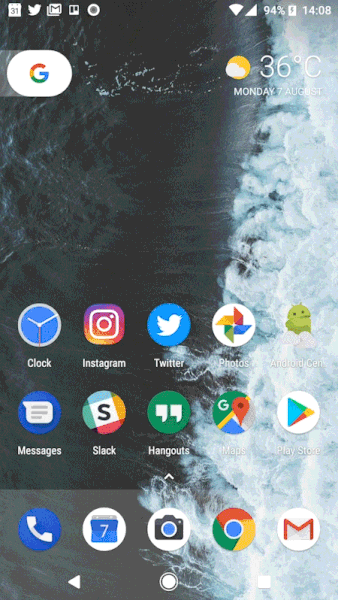 The most notable new feature of Android 8.0 Oreo Picture 5
The most notable new feature of Android 8.0 Oreo Picture 5
The animation effect of Android doesn't change much in Oreo, but there are some new animations in the notification bar added to 'polish' Material Design of Google. Icons move from the status bar to the notification card, then into the overflow area if you have multiple notifications. And icon icons also sprung themselves up around the status bar when new alerts arrive, making the whole system 'more active'.
Finally, the upgrade that many people think is the most important feature of smartphones is the emoji! Android 8.0 has added a handful of new emoticons in Emoji 5.0 and redesigned graphics of old emoticons. Google's emoji compatible library will allow developers to support new emoticons on older Android versions.
 The most notable new feature of Android 8.0 Oreo Picture 6
The most notable new feature of Android 8.0 Oreo Picture 6
Changing the background font in Oreo allows developers to customize how to display emoji and fonts in their specific applications more easily.
Many people believe that the Emoji Compatibility feature in Google Play Services needs to change more. However, system support for new icons and appropriate emoji is also a problem. Many people disregard the importance of emoticons, but they are an important part of the communication of millions and Google is on the right track because it focuses its efforts on both Android and Play Services.
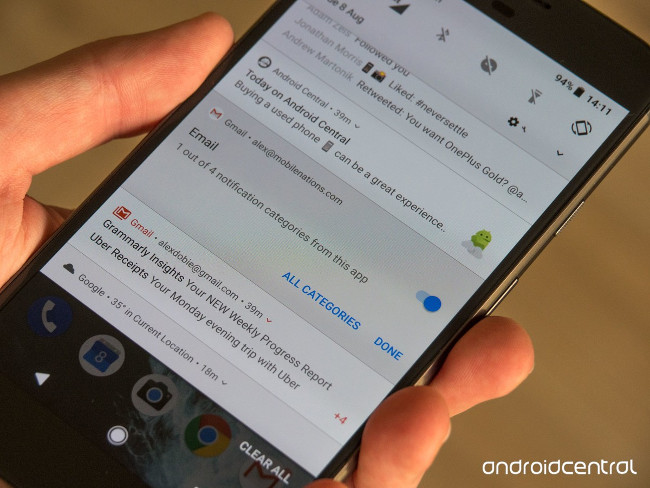 The most notable new feature of Android 8.0 Oreo Picture 7
The most notable new feature of Android 8.0 Oreo Picture 7
Notifications, alerts and widgets
Modified Android notifications in Nougat and Oreo offer some minor changes to make it easier to control daily notifications.
A new feature added is the notification channel. This new feature offers a notification list for applications, making it easier to manage and filter notifications from the same application. For example, social networking apps may have live messaging channels, status updates, likes or other interactions.
After that, you can choose how to notify each channel such as notification by sound, vibration or LED, even block notifications from some channels. Press and hold on a notification that allows you to view and configure its notification channel. Like in older Android versions, you can choose to allow or block notifications.
Users can hardly recognize all the notification channels in a short time
One thing worth noting here is whether most users can identify the notification channels in a short time. Google is hoping to speed up the process along with requesting support for notification channels for applications that want to run on Android 8.0 on Play Store.
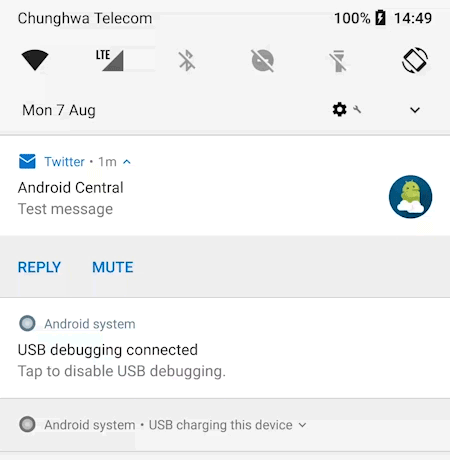 The most notable new feature of Android 8.0 Oreo Picture 8
The most notable new feature of Android 8.0 Oreo Picture 8
Android 8.0 also allows you to schedule notification groups for 15 minutes, 30 minutes, an hour or two hours by swiping right and pressing the clock icon. This is a useful way to remove a message that you don't need to resolve immediately but don't delete it permanently.
Notice of music applications, watching movies more colorful
Notifications of music applications like Google Play Music, YouTube and other music applications will display colors based on the main color of the album art, video thumbnails or art posters . However, this feature also caused arguments, many commentators said that it caused unnecessary visual confusion. The process of converting the album cover image also causes distraction, especially when switching to a brighter color, but there are also many who believe this helps distinguish media announcements from alerts. other.
 The most notable new feature of Android 8.0 Oreo Picture 9
The most notable new feature of Android 8.0 Oreo Picture 9
Like controlling media, notifications such as Maps, Google Apps, Wifi hotspots, USB connections or any other process that may be running in the background will be pushed to the foreground and become messy. On Android version 8.0, these notifications are left in miniature form in the darker notification bar to separate from other important notifications. If you need to see more information, you can expand them as other notifications.
The changes in Android notification settings are small but numerous and they are not limited to the notification bar. The Ambient Display feature (turning on the screen when a new announcement) is first introduced on Nexus 6, is considered the biggest change in Android 8.0.
 The most notable new feature of Android 8.0 Oreo Picture 10
The most notable new feature of Android 8.0 Oreo Picture 10
In fact, the main Ambient Display area displays less information than Nougat, only time and a series of icons appear when the phone is turned on. On the other hand, these notifications will now be displayed in a more friendly way.
The Ambient Display notification window is larger and easier to read and if you have the option turned on, double-click to open the main lock screen. Creating a balance between information density and browsing capabilities is always complex, but Google still makes a reasonable combination of these two elements in Oreo.
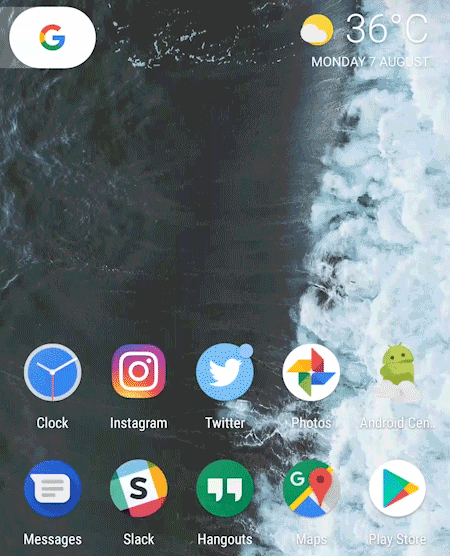 The most notable new feature of Android 8.0 Oreo Picture 11
The most notable new feature of Android 8.0 Oreo Picture 11 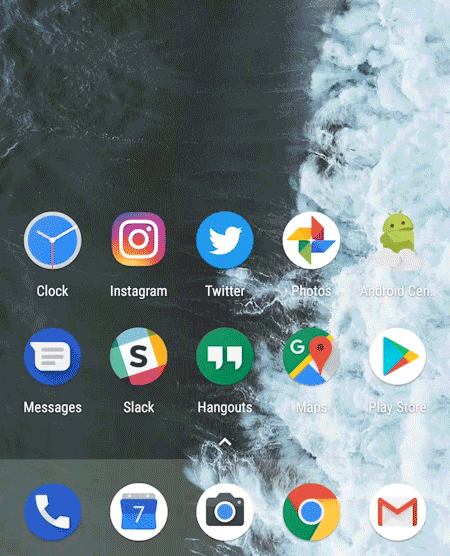 The most notable new feature of Android 8.0 Oreo Picture 12
The most notable new feature of Android 8.0 Oreo Picture 12
In addition to the notification bar, lock screen and always-on screen, Android 8.0 allows launchers to display its own app notifications with the notification badge feature. Applications with a pending notification will display a colored dot, press and hold to open the shortcut menu (shortcut menu), display the next message instead of having to swipe down the notification bar to view all notifications used as before.
It is not the only new trick on the shortcut menu in Oreo, a new widget shortcut will "free" the user from the long and cumbersome widget menus in an easy way to view all widgets from one specific application.
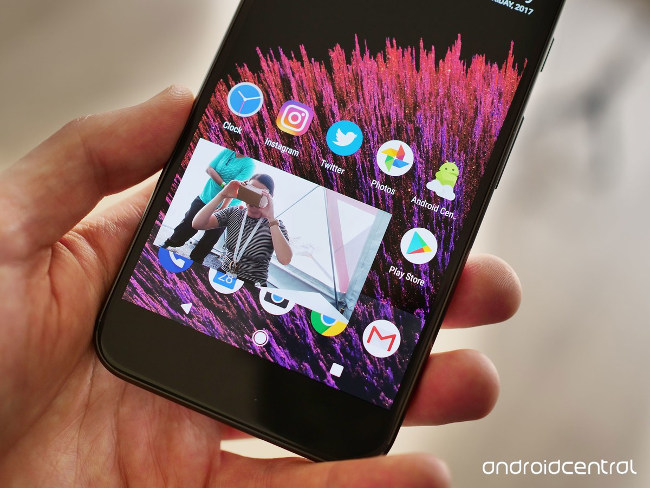 The most notable new feature of Android 8.0 Oreo Picture 13
The most notable new feature of Android 8.0 Oreo Picture 13
Picture-in-picture mode
In fact, Picture-in-picture (PiP) mode was introduced in Android 7.0, but only for Android TV devices. The 8.0 version brings it to phones and tablets, introducing a huge feature and potential for super large Phablet class devices.
PiP mode changes depending on how the developer does it, but basically this feature allows you to run a video from within an application, then press the home key to zoom down to a floating window with the Its own playback driver. You can resize and move it around the screen while opening and use other applications as usual in the background.
This mode is similar to the multi-window mode introduced in Nougat. And while you used to use multiple windows to split the screen into video windows and other applications, the PiP is a much more elegant approach.
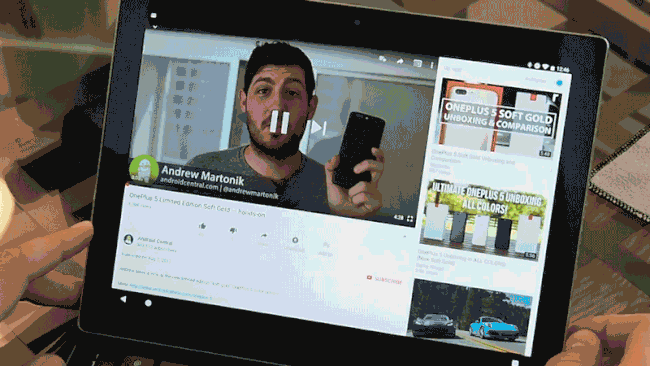 The most notable new feature of Android 8.0 Oreo Picture 14
The most notable new feature of Android 8.0 Oreo Picture 14
PiP mode finally comes to mobile devices - but will content providers make users pay to use it?
Like many features of Android 8.0, we will have to wait for the developer to update their application to use this PiP mode. However, some platform owners (or their advertisers) may object to playback in the background in some cases. The most typical is YouTube, we can only listen to YouTube music in the background when registering for the Red YouTube package.
Sign in and enter smarter text
People hate having to enter a password, so in Oreo, Google tried to solve this problem with the "Autofill with Google" feature. This feature can help you log in to your phone account using the information stored in your Google account with just one click. For example, if you have logged into Twitter on the web via Chrome, Google can use these saved login information to help you sign in to the Twitter application on your phone.
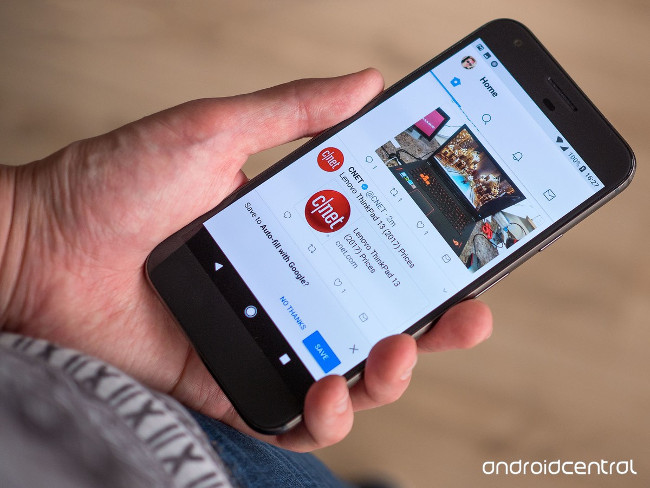 The most notable new feature of Android 8.0 Oreo Picture 15
The most notable new feature of Android 8.0 Oreo Picture 15
Android Oreo is the beginning of the end of entering a password on the phone
If you have already registered a password management service on an application and they have updated the application to work with Android 8.0, you can automatically enter your password into their application with any action or copy. Copy and paste text.
This feature will certainly reduce the difficulty of setting up a new Android device, and from Google 's point of view, these benefits both help users perform better password management and stimulate them to use Chrome to Browse the web on the desktop.
Android 8.0's password features help users completely without having to enter a password on a mobile device (except Google password and two-factor confirmation code). However, like many convenient features of Android, you will feel comfortable providing Google all this information for the first time to get benefits later.
One thing worth noting is that Android is also smarter in handling specific types of information in text fields. When entering text, Google's Machine Learning technology will find the type of data you have selected and provide relevant contextual options, such as a shortcut to the Dialer application for phone numbers or Google Maps for for address.
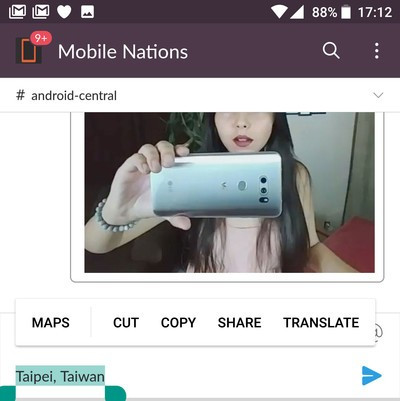 The most notable new feature of Android 8.0 Oreo Picture 16
The most notable new feature of Android 8.0 Oreo Picture 16
This feature is supported in Google Chrome on older Android versions, but it's great to see it introduced on the entire OS in Oreo.
New features for convertible computers
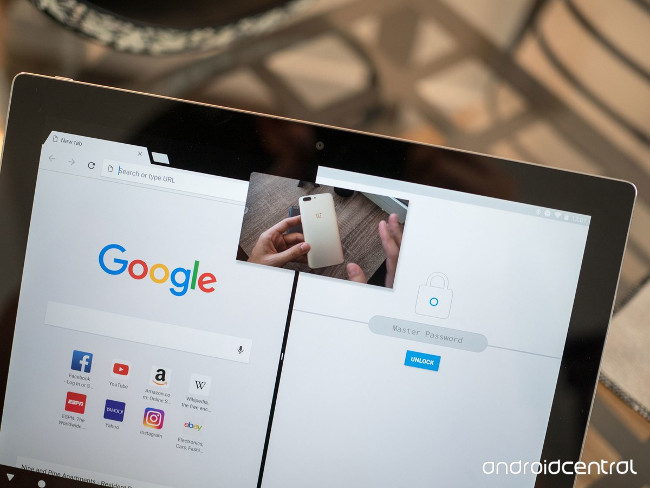 The most notable new feature of Android 8.0 Oreo Picture 17
The most notable new feature of Android 8.0 Oreo Picture 17
Despite the imminent collapse of the Android tablet market, Oreo reports that Google still plans to continue to invest in the convertible computer market through Android as we know it, Chrome OS runs applications. Android or something completely different.
Android 8.0 brings new life for Pixel C tablets that are soon retired. On the new multi-tasking interface introduced for tablets in version 7.1.2, Android 8.0 added a new shortcut system for Android applications, accessing applications and menus faster when It is not convenient to touch the screen.
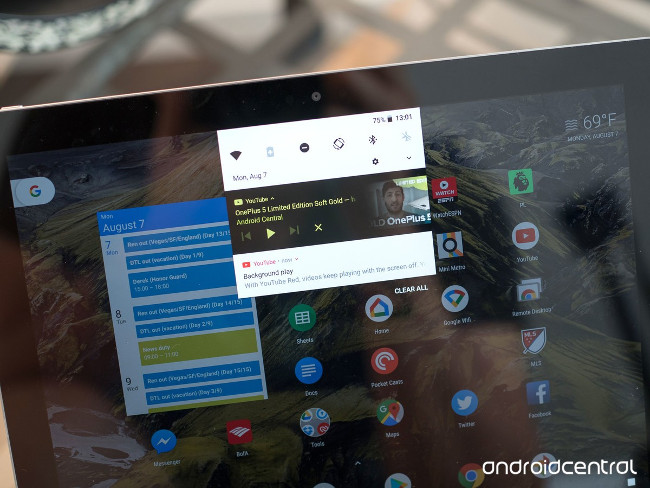 The most notable new feature of Android 8.0 Oreo Picture 18
The most notable new feature of Android 8.0 Oreo Picture 18 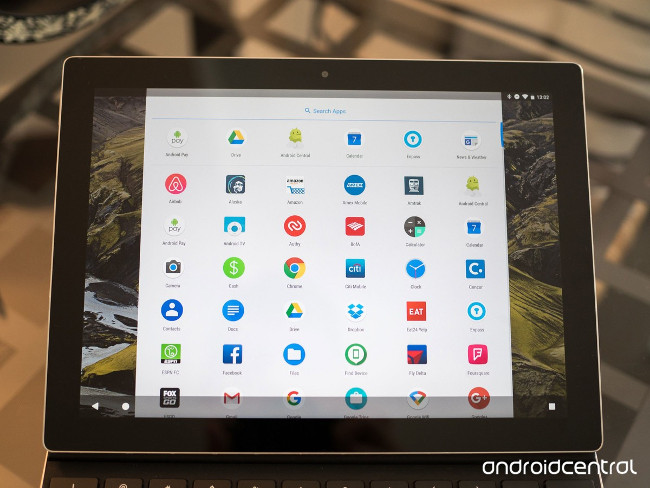 The most notable new feature of Android 8.0 Oreo Picture 19
The most notable new feature of Android 8.0 Oreo Picture 19
In general, Pixel C and Chromebook will benefit from the new picture-in-picture mode, especially useful on laptops, tablets or convertible computers (no need to resize to Netflix window). Suitable for Chrome, Twitter and other applications). It is not a complete desktop screen window system, but instead develops Android tablets in the direction of current iPads.
New audio-visual enhancements make Android tablets more attractive to content creators. Supports a wide range of colors in applications (such as DPI-P3, Adobe RGB and Pro Photo RGB) in order to make Android tablets more suitable for photographers, while AAudio's new API will reduce levels. Audio delay, bring Android closer to GarageBand on iPad.
Android still has a long way to catch up to Apple and Microsoft tablets and convertible products, but with the new features in Oreo we have the right to hope for it. The important issue with Android tablets is still application support, where very few applications, even Google's applications, can support horizontal and wide screens. Android 8.0 with all its enhancements, can't do anything to fix this situation.
Limit running background, better battery life, faster operating system updates
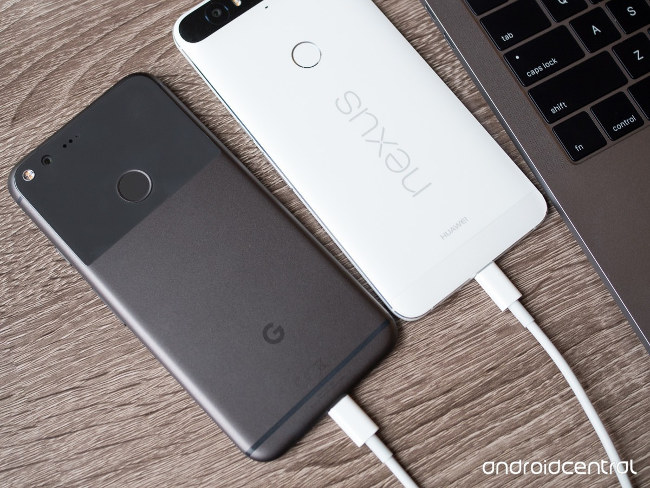 The most notable new feature of Android 8.0 Oreo Picture 20
The most notable new feature of Android 8.0 Oreo Picture 20
Applications running in unchecked background are one of the reasons for poor battery life on Android phones. And now, developing "Project Doze" and "Doze On-The-Go" enhancements in Android 6.0 and 7.0, version 8.0 makes these applications less impact on device batteries.
With Oreo, Google has introduced many limitations for applications while they are not in the foreground. Broadcast limitation in the new version makes (there are some exceptions) the applications in the background cannot react to the broadcasts (events that occur on the device) without having to specifically target the application . Google is using these restrictions to motivate developers on Android's scheduling feature, introduced in Lollipop to manage background tasks in an easier way for computer batteries.
For Android 8.0 devices, you don't need to do anything to increase battery life (and performance). In one experiment, it was found that there was a big difference between battery life on Pixel XL when compared to Nougat.
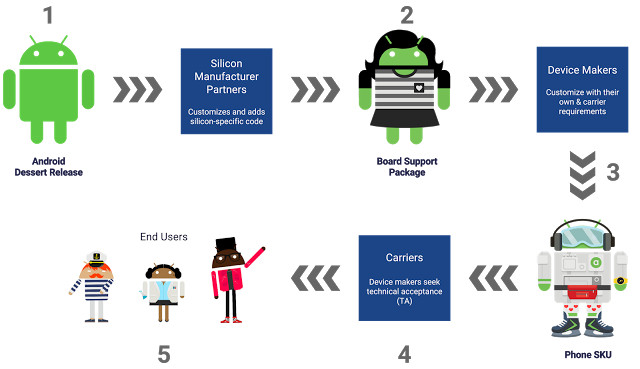 The most notable new feature of Android 8.0 Oreo Picture 21
The most notable new feature of Android 8.0 Oreo Picture 21
Another drawback addressed by Android 8.0 is the operating system update. Through the new Project Treble initiative, Google created a modular structure that hardware companies can use to separate their customizations from the main operating system. The idea is that this will make it easier to push the firmware update without having to update it completely. This is not a 'panacea' for problems in Android updates but it will significantly reduce the workload to update Android phone 8.0 to the assumed version 8.1 or 9.0, in addition it speed up the deployment of security patches during the transition.
The features in Android 8.0 are not really outstanding but the combination of these changes made the Android operating system easier to use, better performance and more convenient.
You should read it
- Instructions for using picture-in-picture mode on Android Oreo
- Android 5.1 will be released in February, the silent mode returns
- 8 features on Android 4.4 KitKat you may not know yet
- 9 security reasons you should upgrade to Android 8.0 Oreo
- A picture worth pondering about the Android world today
- HTC's Android 4.4.4 and Android L roadmap
- Google postponed Android 5.0 update for HTC One M8
- Leaking features of Android 4.4.3
- Android operating system history through versions
- Android history is fully expressed through short video
- 3 newly changed settings of Android P
- 3 hidden features on Android P should be explored immediately






 5 certain tricks must know if you are using Android 8 Oreo
5 certain tricks must know if you are using Android 8 Oreo Google released Android Oreo Go for low-profile smartphones
Google released Android Oreo Go for low-profile smartphones Install Android Oreo now
Install Android Oreo now How to customize battery saving mode on Android Oreo
How to customize battery saving mode on Android Oreo New features of Android 8.0 on Samsung Glaxy S8
New features of Android 8.0 on Samsung Glaxy S8